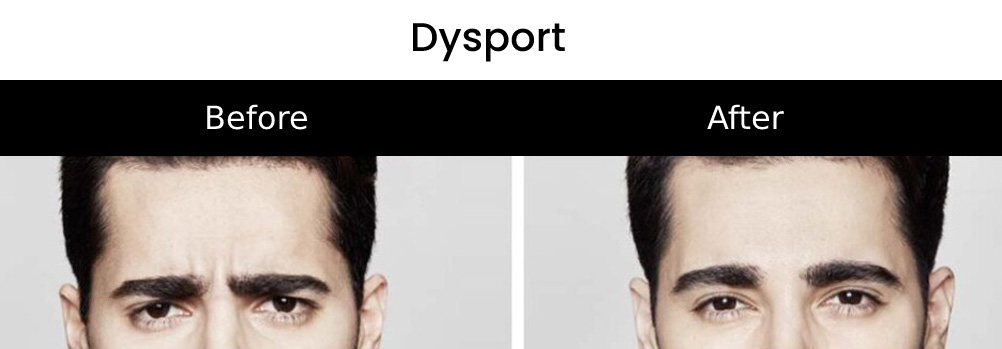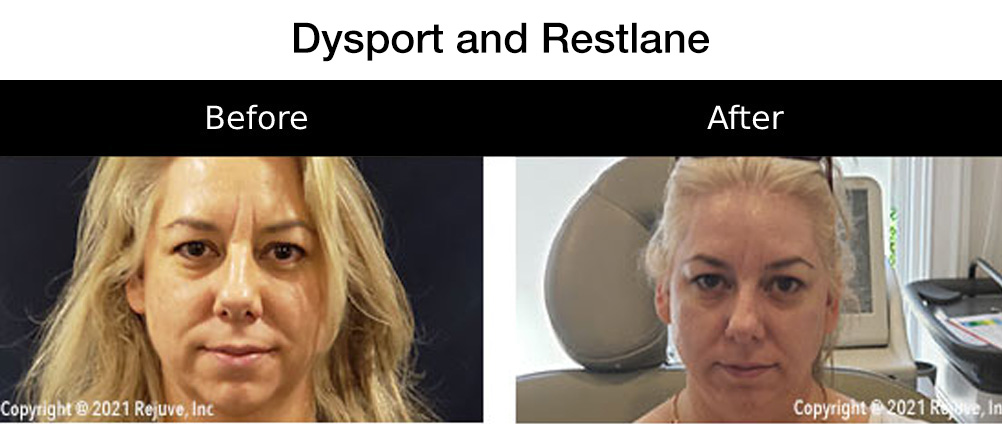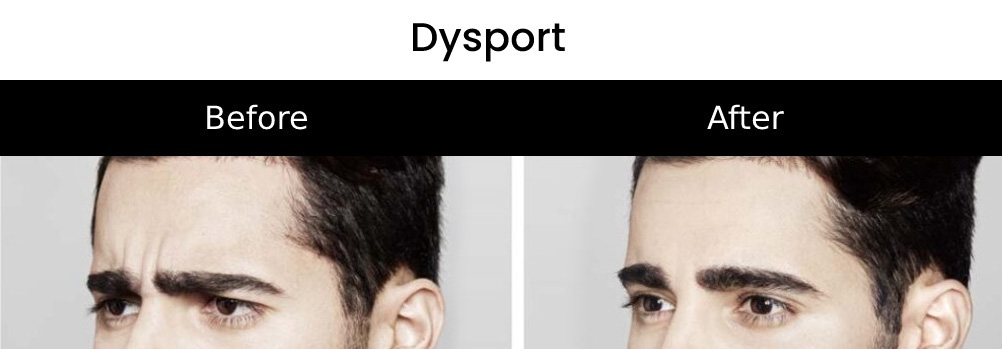Dysport
Dysport is the newest non-surgical treatment that has proved effective in treating frown lines and wrinkles by relaxing the facial muscles in the forehead. Dysport is injected in the areas of expression lines where frowning, smiling or scowling create lines and creases. The toxin acts by minimizing these formations or restraining their formation. The three commonest locations are the forehead, between the eyebrows (frown lines known as the “elevens”), and next to the eyes where “crow’s feet” are formed. Dysport gives a patient a more youthful appearance by preventing or controlling these deep expression lines.
Dysport, a Botulinum toxin, was approved for use by the FDA in May of 2009 for the treatment of the frown lines. It was the second FDA approved neuromuscular toxin for reduction of wrinkles. The drug is manufactured by Medicis, the same company that makes Restylane, Restylane Kysse, Restylane Lyft, and Sculptra. The toxin was meticulously studied and deemed to be as safe as Botox before being approved.
Dysport was a British development of the early 1990s, designed to treat a number of ophthalmologic and neurological conditions. The toxin was first used in treatment of muscle spasms. The drug underwent a decade of clinical experience during which thousands of successful experiments were performed for conditions ranging from frown lines to excessive sweating beneath the armpits. Dysport has been approved in 69 countries worldwide.
In 2006, Ipsen, Dysport’s manufacturer joined forces with the Medicis, the US pharmaceutical group, for North American distribution. Dysport at the time was the only injectable toxin to compete against Botox.
It was definitely a game changer in the aesthetic industry giving patients another option. In 2014, Galderma Laboratories LP (Galderma) bought the rights to distribute and commercialize the Restylane products and Dysport throughout the US and Canada.
What is the difference between Botox vs. Dysport?
Before we talk about the differences, here are their similarities. Both Botox and Dysport are derivatives of Botulinum toxin Type A; both are injectable, and both act by temporarily immobilizing certain facial muscles.
- Dysport contains fewer proteins that surround the toxin compared to Botox. These proteins are the cause of the toxin breaking down. It is believed that the system is less likely to build immune antibodies to Dysport as it has in cases with Botox. In such situations where Botox no longer works, Dysport is an effective substitute.
- Dysport may have a faster onset of action.
- Dysport has been shown to be effective for 3 to 4 months in the published studies. Botox has been shown to work and is approved to last 3 months. In each individual, the effects of dysport and botox will vary.
- Dysport may be less expensive in the long run if the duration last longer.
- Dysport may be less painful during the injection process for some patients.
- Dysport is currently FDA approved to treat the frown lines. Botox is FDA approved to treat the frown lines, forehead lines, and crow’s feet. However, Dysport is used all the time to treat the crow’s feet and forehead lines as off label areas.



